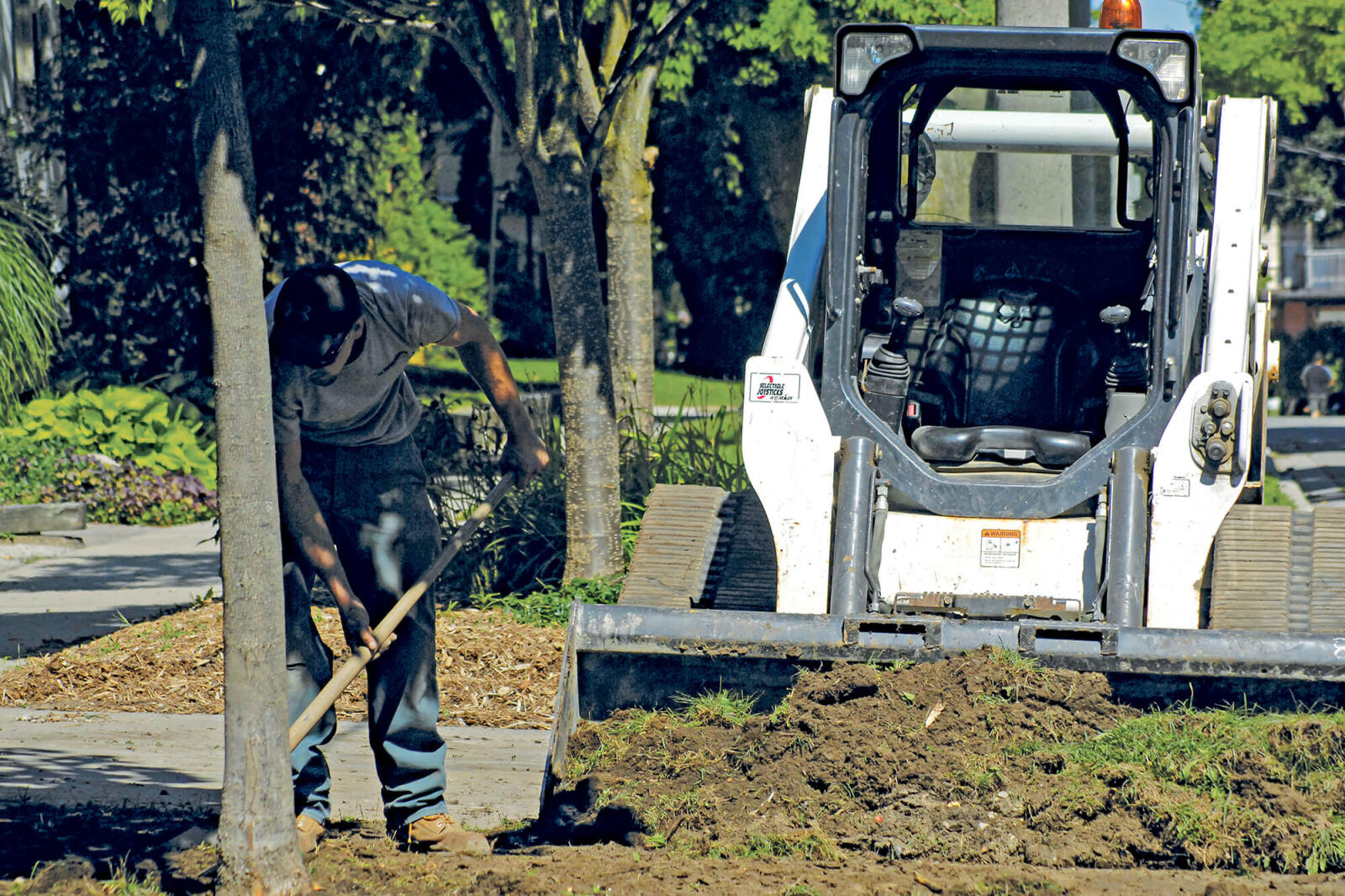June 13, 2018

Investing in equipment that helps save time, and makes the job easier, improves margins.
Improve your equipment spend
BY MARK BRADLEY
 Last issue, we covered benchmarking your equipment costs. This included recovering, or budgeting, the cost of ownership so your company is building a sustainable plan to recoup the costs of equipment depreciation each year.
Last issue, we covered benchmarking your equipment costs. This included recovering, or budgeting, the cost of ownership so your company is building a sustainable plan to recoup the costs of equipment depreciation each year.In this article, we’ll look at equipment costs from a few different perspectives and focus our attention on how you can make equipment decisions that help improve your company’s bottom line.
EQUIPMENT VS. LABOUR
Our industry is facing a labour shortage, bordering on a crisis. It seems harder than ever to find, keep, and motivate good, skilled people for the positions we have available. There are a few ways to solve this problem:- We can keep advertising for our positions, increasing wages, and investing more into HR and recruiting.
- We can plan for less growth, and limit our goals, since we just can’t find the people to help us achieve our sales potential.
- Or … you can invest in more equipment, to help each person become more productive — and to increase revenues without necessarily increasing people.
Years ago, TBG invested in a skid steer for each crew. The goal was not only to reduce sharing (and unnecessary transport) of equipment, but also to improve each crew’s productivity. Let’s take a look at how this works:
- Say you’ve got a three-person crew doing residential landscape construction. The industry “average” daily production for a three-person crew is somewhere between $2,000 and $3,000 in revenue, per day — or about $100 in revenue per man, per hour. (Revenue benchmarks include all revenue generated, including materials installed.)
- One of the ways we can improve the revenue generated from our existing people is to invest in, and equip them with, the most productive equipment. A skid steer is a great example. Whether it’s unloading a truck, moving materials, or digging, there is something it could be doing to save time almost every day. Let’s say you lease a new skid steer for $850 per month. It’s a significant cost, sure, but probably not as significant as you might think. I look at it this way: Any hour saved by using the equipment, is an hour we can use to generate revenue on the next job or task. For instance, if having that machine onsite will help us save half a day on a one-week job, we just opened a half day’s worth of time where we can generate revenue somewhere else.
- If you can just do that once a month, that skid steer will pay for itself. If we can save a half-day for a three-person crew, that gives us 12 additional man-hours for revenue-generating work — which is about $1,200 worth of opportunity. That alone would cover the entire cost of your skid steer, your maintenance, your fuel, and your insurance for that month.
- If a skid steer could help your crew save just two days a month, that represents about $4,000 of additional revenue per month, or about $36,000 per year — without needing to hire any more people!
NEW EQUIPMENT VS. OLD
Many contractors struggle with the decision to keep older equipment (with no payments) vs. buying new equipment (and having payments, but fewer repairs).While every company is different in the equipment they buy, how well they maintain it, and how hard they use it, my analysis comes to the same conclusion time and time again.
Newer equipment will cost you more in payments, obviously. You will, however, save on repairs, maintenance and fuel. Fewer things are likely to go wrong with new equipment, warranties should cover most major repairs, and newer equipment is likely more fuel efficient. Most of the time, these two numbers (payments vs. fuel + maintenance) are very similar, almost cancelling each other out.
The hidden cost of owning older, payment-free equipment is the cost of downtime. When a machine breaks down, the most significant cost is often not the repair — it’s the productivity lost doing the job by hand! The cost of lost revenue is far greater than most owners realize. Remember again: the potential revenue of each man-hour is $100 per man, per hour. If your crew has to spend a half-day wheelbarrowing materials, that could have taken 30 minutes with a machine, you’ve lost hundreds, and maybe even thousands, in opportunity to generate revenue.
In my experience, companies that run newer equipment generate more revenue with fewer people and less overhead. More often than not, this leads to a healthier bottom line, even if their equipment expenses are higher than average.
Helpful benchmark: If your repair and maintenance expenses are more than 1.5 times your fuel expenses, there’s a very good chance your equipment is costing you more in repairs and downtime than you would spend on interest or ownership costs of new equipment.
LEASING VS. OWNING EQUIPMENT
Many factors can affect whether leasing or buying equipment is the correct decision for your company. In general, I find most contractors like to “own” their equipment — with no payments — because it feels less risky.While there is no problem with the ownership mentality, it could stunt your growth potential or productivity. Many companies wait until tax season, or when they have saved up enough money, to buy equipment needed to improve productivity. But you could have been months, even years, ahead, had you leased.
Leasing gives you the option to have the equipment with a minimal (or no) down payment. In exchange, you pay an interest or financing fee. However, with today’s interest rates, it can make a lot of sense to pay the lease interest, and keep your capital working for you in other ways to fuel company growth. Your capital can be used for important things like advertising, shop improvements, better terms or pricing for materials, etc., instead of saving you a couple of small percentage points on interest.
There are many factors to consider when managing your equipment expenses, but I urge you to keep one thing in mind: Sometimes, the costs you can’t see are more important than the ones you can. Equipment helps your crews’ productivity. The more work they can complete in a day, the more revenue your company will earn, without adding payroll or overhead costs.
When making equipment decisions, I strongly urge you to consider both sides of the equation. What it will cost you to invest in equipment... And what’s its costing your revenue not to invest. You will likely be surprised at what you come up with.
Mark Bradley is the CEO of TBG Environmental and LMN, based in southern Ontario.